page 64
Note: the contents of this page as well as those which precede and follow, must be read as a continuation and/or overlap in order that the continuity about a relationship to/with the dichotomous arrangement of the idea that one could possibly talk seriously about peace from a different perspective as well as the typical dichotomous assignment of Artificial Intelligence (such as the usage of zeros and ones used in computer programming) ... will not be lost (such as war being frequently used to describe an absence of peace and vice-versa). However, if your mind is prone to being distracted by timed or untimed commercialization (such as that seen in various types of American-based television, radio, news media and magazine publishing... not to mention the average classroom which carries over into the everyday workplace), you may be unable to sustain prolonged exposures to divergent ideas about a singular topic without becoming confused, unless the information is provided in a very simplistic manner.
Let's face it, humanity has a lousy definition, accompanying practice, and analysis of peace.
Yet, even at this stage in our attempted analysis of peace, what do we mean by "Peace"? Can we look at it as a separate, individual identity or is it more appropriate to align it with an environmental, social or physiological state. For example, does peace-of-"mind" have the same general meaning to everyone, or does it provide us with the tell-tale sign that peace is as arbitrarily defined as terms such as beauty, truth, justice, strength, wealth, kindness, intelligence, wisdom, etc...? Or perhaps we should align the word peace with feelings associate with the heart? For example, we might say a "heart-felt" peace. In any respect, how are we to define peace if its labeling rests on arbitrary conditions, whether or not an entire country or species such as humanity accepts a given definition and states such in a dictionary. Whereas humans may claim that a particular environmental condition is representative of peace, is this because the acknowledgement of an underlying decay of organic matter is overlooked or even denied? Indeed, does peace in terms of a human sense also mean that it is the same for all forms of life at the same time?
While there are occasions which may become interpreted as representing peace because someone... (who is agreed with by supporters)... is in a position to state such a condition as being peace (such as in the case of a military commander or politician after the cessation of war); the fact that such a type of peace is not sustained forever— greatly increases the interpretation that such a definition of peace is an illusion... It is an illusion because the concept of peace with respect to a human quality may well be a fairy tale, due to the fact it does not appear to be a "natural" occurrence. In other words, peace has no consistent identity amongst all living creatures, much less both animate and inanimate matter. Peace does not appear to be a "natural law". It is more like a citation that is applied to a given circumstance because of a law we have not really identified as yet. Analogously, it is like a police officer whose perceptions of a given occasion causes them to give a ticket for failure to comply to their understanding of a (socially contrived) law... which may be little more than a warning or the initial stage of a fine to be imposed on a person. And though some readers may take exception with the idea of comparing peace with a citation (or warning) because they define one or both instances as negative... or an action of anti-peace from a keeping-the-"peace" officer, the fact remains that peace is nonetheless in the position of being the result of a given effect after a cause— unless we venture to consider that peace preceded all things and that non-peace was due to some deterioration. If this is the case, then the back-and-forth pendulum of peace and non-peace conditions is the representation of incremental instances of decay which achieve some momentary measure of equilibrium.
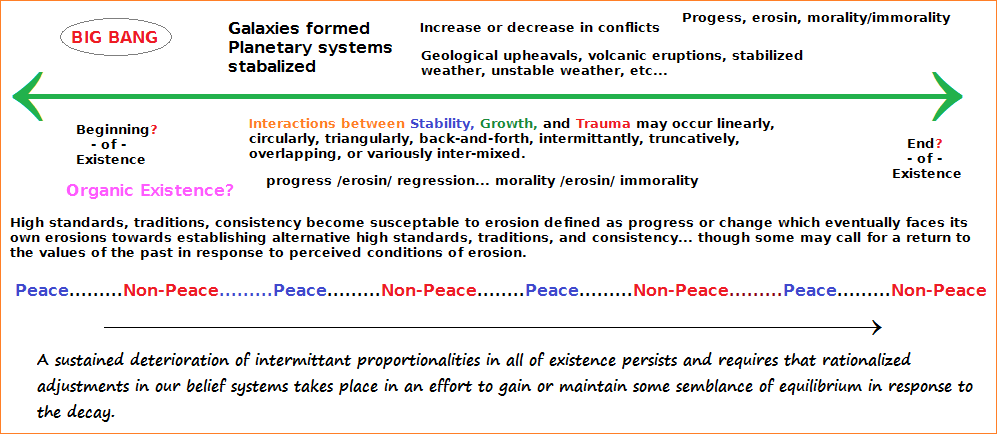
And as long as we are engaged in a divergent form of philosophical inquiry, let us ask if a condition of peace preceded non-peace at the beginning of existence? Or was there a void and that this condition was neither peaceful nor chaotic? Did peace exist before the assumed Big Bang of the Universe? Or is peace only appropriately defined with respect to human existence? Does peace automatically imply happiness? Or can there be peace, such as in the case of an absence of war, yet everyone is starving?
However, in as much as if we were to query the memories of some people who are familiar with ancient gods and goddesses, they may not be able to recall any associated with the word "Peace." To such an extent, it would be easy to conclude that "peace" has long been alternatively described as an attribute of some other behavioral circumstance such as love or joyful occasions such as moments of merriment. One might also conclude because they can not recall any god or goddess associated with peace, that none had existed because it was not a natural idea. In other words, if it were natural, peace would have been one of the constructed embodiments portrayed as a god, goddess, non-human power, creature, event, etc... In addition, by using such a premise, its absence as an embodied person, place or thing in myths, legends, and the like... would say something quite dire about the human brain.
For example, let us say that one's memory may readily refer to:
- Athena as the ancient Greek goddess of warfare
- Minerva as the ancient Roman goddess of warfare
- Mars as the ancient Roman god of war
- (and) Ares as the ancient Greek god of war
Yet, because their memory could not call forth a god or goddess assigned with a strict quality or criteria called peace... it would be easy to suggest that the reason peace is difficult to achieve in any sustained way is because it was not a viable idea. However, for those pursuing a search for a god or goddess of peace, they might well come up with the singular Ram horned god "Banebdjedet" of ancient Egypt that was then followed in later ages (or contemporaneous with) a goddess who was part of a triad called the Horae. It is because we are dealing with peace as a construct of brain activity called thought, the fact that we can recognize that there was not distinctly organized trio of gods representing war as there was with peace, is describing a functionality of human thinking processes that needs to be taken in consideration. For example, while the Horae represented a triadic structure referencing peace, this same pattern was not found in the Ancient Egyptian figure of peace, if in fact the "Banebdjedet" character actually represented what either we of today or those in the past thought of as "peace". The label of "peace" might well be a misunderstanding based on a faulty interpretation. However, the presence of a "three" activity in Ancient Egypt is said to exist in three principal "social" categories of (Ancient Egyptian) deity: gods, goddesses, and youthful deities, mostly male. (A statement derived from the Britannica article on Egyptian religion; an excerpt of which follows because of its relevance). However, this "grouping-into-three" from a present day analytical perspective could nonetheless be an imposed interpretation that may have played no part in the day -to- day consciousness of Ancient Egyptians themselves... just like the presence of many "three-patterned" social categories are overlooked by people of today, though they regularly use one or more of them. (See volumes of information about "threes" at: Threesology Research Journal).
Ancient Egyptian Religion Groupings of deities The number of deities was large and was not fixed. New ones appeared, and some ceased to be worshipped. Deities were grouped in various ways. The most ancient known grouping is the ennead, which is probably attested from the 3rd dynasty (c. 2650–2575 BCE). Enneads were groups of nine deities, nine being the "plural" of three (in Egypt the number three symbolized plurality in general); not all enneads consisted of nine gods. The principal ennead was the Great Ennead of Heliopolis. This was headed by the sun god and creator Re or Re-Atum, followed by Shu and Tefnut, deities of air and moisture; Geb and Nut, who represented earth and sky; and Osiris, Isis, Seth, and Nephthys. This ordering incorporated a myth of creation, to which was joined the myth of Osiris, whose deeds and attributes ranged from the founding of civilization to kinship, kingship, and succession to office. The ennead excluded the successor figure, Horus, son of Osiris, who is essential to the meaning of the myth. Thus, the ennead has the appearance of a grouping that brought together existing religious conceptions but was rather arbitrary and inflexible, perhaps because of the significance of the number nine. Other numerical ordering schemas included the Ogdoad (group of eight gods) of Hermopolis, which embodied the inchoate world before creation and consisted of four pairs of male and female deities with abstract names such as Darkness, Absence, and Endlessness. Here too the number was significant in itself, because at least six different pairs of names are known although eight deities are listed in any occurrence. The major god Amon, whose name can mean “He who is hidden,” was often one of the ogdoad with his female counterpart, Amaunet. The most common grouping, principally in the New Kingdom and later, was the triad. The archetypal triad of Osiris, Isis, and Horus exhibits the normal pattern of a god and a goddess with a youthful deity, usually male. Most local centres came to have triads, the second and third members of which might be devised for the sake of form. Thus, one triad worshipped in the Greco-Roman-period temple at Kawm Umbu- (Kôm Ombo) consisted of Haroeris (the "elder Horus"), the goddess Tsenetnofret ("the perfect companion"), and the youthful god Pnebtawy ("the lord of the two lands"). The last name, which is an epithet of kings, is revealing, because youthful gods had many attributes of kings. As this case indicates, triads resemble a minimal nuclear family, but deities were rarely spouses. The notion of plurality and the bringing together of the essential types of deity may have been as important to the triads as the family analogy. Another important ordering of deities was syncretism, a term with a special meaning for Egyptian religion. Two or more names of gods were often combined to form a composite identity; many combinations included the name of Re. Prominent examples are Amon-Re, a fusion of Amon and Re, and Osiris-Apis, a fusion of Osiris with the Apis Bull. Although composite forms such as Amon-Re became the principal identities of some gods, the separate deities continued to exist and sometimes, as in the case of Re, to receive a cult. In part, these syncretisms expressed the idea of Amon in his aspect as Re; they were thus analogous to the multiple manifestations of individual deities. Through syncretism many major deities came to resemble one another more closely. |
[Note: the idea of "three" symbolizing plurality can be seen in the early counting idea of the three number words "One, Two, Many". Where the last word was not only the third in line of a sequence-of-three, but represented any quantity beyond three... hence, plurality.]
A triple deity pattern to be compared with triple patterned ideas found in logic. The description of the triad gives one the impression of various syllogisms, though they too are surely crude representations of an underlying cognitive structure preceding their articulation by their presumptive creators:
- God (males are typically larger than females)... For example: "Major Premise/Thesis"
- Female (females are typically smaller than males but contrasted to them)... For example: "Minor Premise/Anti-thesis"
- Youthful deity (typically males?, such as lord over two lands; which could represent a go-between, compromise or dichotomy/duality)... For example: "Conclusion/Synthesis"
Likewise, we could describe a triad with the word-labels: War- Peace- Either/Or... neither. In any respect, the same underlying cognitive pattern can be seen and very likely exists as part of a process between humanity and the deteriorating planet and solar system. And if we were to illustrate a Pantheon of this trio, we would have to recognize that the God-of-War placement was dominant (such as for example a "Major-Premise"); with the God-of-Peace signified as a sub-dominant theme (such as for example a "Minor-Premise"); and the presence of an existence where neither war or peace were explictly denoted in terms of having a representative god (like the overall publics of the world which do not have an actual Representative); we thus find the general state of being as a type of formless form of a god.
| The absence of a God/Goddess to represent a generalized non-war/non-peace social atmosphere because the human brain was not initially configured with such a blueprint in early evolutionary stages which lingers today. Like the development of the human brain through the stages of a Reptilian past, into an old Mammalian brain, that led us to the present stage of having a new mamal brain whose functionality has not come unto its own. From a theological perspective, we can describe the three orientations with the old labels of Father, Son, Spirit/Ghost... which illustrate the notions of major, minor, and ephemeral (short-lived) or illusory representation... such as many an apparition are because of the nature of superstitions. (The Native American Ghost dance ritual comes to mind.) | ||
| Major Brain functionality related to a predatory and territorial reptilian Past (The boxing glove brain).  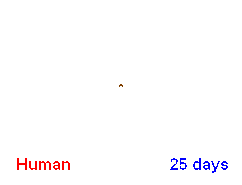 |
Minor Brain functionality related to a less aggressive old Mammalian development. (The branches and roots connectivity.) 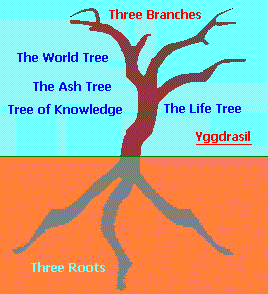 |
Inconclusive functionality related to a New Mammalian brain schematic development. Although differences are sometimes obvious between the functionality of the three different brain categories, they may appear the same when dressed in the same language and environments. Like three distinct personalities which can hide from one another in a single person... representing a three-to-one ratio. |
| The (major) god/goddess of War such as the "M's and A's" groupings: Mars, Ares, Athena, Minerva. (Father/Mother) |
The (minor) god/goddess of Peace such as Banebdjedet(?) and Eirene. (Son/Daughter) |
The absence of god/goddess to represent a generalized state of affairs in which there is no war nor actually defined peace, and that war may be a possibility or peace a yearning that is not really achieved. In other words, the Major-premise/Minor-premise... Conclusion pattern-of-three is not formulated because there is no underlying human cognitive schematic within the human brain. The state of affairs is thus representative of a brain pattern that does not yet exist or exists in another type of formulation/vocabulary that is not being applied to the context. {"Relative", in terms of human relatives and a relative state of humanity} |
|
Thesis ~ Antithesis ~ Synthesis Indulgence ~ "Middle Way" ~ Ascetism Major Premise ~ Minor Premise ~ Conclusion Contradiction ~ Excluded Middle ~ Identity Principal | ||
| "God-ology": Omnipresent Omnipotent Omniscient |
"Metaphysics-ology": What is real How change comes What is mind |
Marxian "Dialectology": Unity of opposites Quantity & quality Negation of negation |
| Epistemology: How we know What is truth What is mind |
Axiology: Nature of good Nature of beautiful Nature of religious |
Ontology: Quality (1st-ness) Relation (2nd-ness) Representation (3rd-ness) |
Note: the Sun's three "moments" (dawn-noon-dusk) will "fuse" (syncretism) together one day as it continues on its course of enlarging on its path of burning out. The enlarging Sun will cause the three "moments" to fuse together from our perspective on Earth and cause a fusion of all biological activity which is tied to the moments in its circadian rhythm.
Hora (Plural: Horae) In Greco-Roman mythology, (the Horae were) any one of the personifications of the seasons and goddesses of natural order; in the Iliad they were the custodians of the gates of Olympus. According to Hesiod, the Horae were the children of Zeus, the king of the gods, and Themis, a Titaness, and their names (Eunomia, Dike, Eirene—i.e., Good Order, Justice, Peace) indicate the extension of their functions from nature to the events of human life. At Athens they were apparently three in number: Thallo, Auxo, and Carpo, the goddesses of the flowers of spring and of the fruits of summer and autumn. Their yearly festival was the Horaea. In Homer's Iliad they are the gatekeepers of Olympus. In the Homeric Hymn to Aphrodite they greet Aphrodite at her birth and accompany her to Olympus. They appear first in art on the François Vase (c. 570 BC), which shows them attending the wedding of Peleus and Thetis. In the Hellenistic and Roman periods the Horae became the four seasons, daughters of the sun god, Helios, and the moon goddess, Selene, each represented with the conventional attributes. Subsequently, when the day was divided into 12 equal parts, each of them took the name of Hora. Source: "Hora." Encyclopædia Britannica Ultimate Reference Suite, 2013.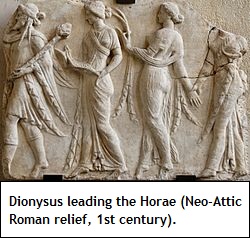 Wikipedia: Horae (3-to-1 ratio) |
Now let us contrast the above trio with another variety from the same era:
Fate Greek Moira, (plural Moirai, Latin Parca, plural Parcae) (The Fate) in Greek and Roman mythology, (referred to) any of three goddesses who determined human destinies, and in particular the span of a person's life and his allotment of misery and suffering. Homer speaks of Fate (moira) in the singular as an impersonal power and sometimes makes its functions interchangeable with those of the Olympian gods. From the time of the poet Hesiod (8th century BC) on, however, the Fates were personified as three very old women who spin the threads of human destiny. Their names were Clotho (Spinner), Lachesis (Allotter), and Atropos (Inflexible). Clotho spun the "thread" of human fate, Lachesis dispensed it, and Atropos cut the thread (thus determining the individual's moment of death). The Romans identified the Parcae, originally personifications of childbirth, with the three Greek Fates. The Roman goddesses were named Nona, Decuma, and Morta. Source: "Fate." Encyclopædia Britannica Ultimate Reference Suite, 2013.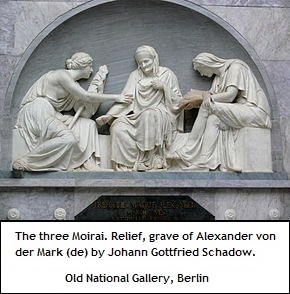 Wikipedia: Moirai |
Let us not add three more references of three deities, keeping in mind the intent is to bring to the fore a behavior of mental activity... of which peace and its counter-part war are, because both are used to represent extremes... or "higher" activity that might alternatively be labeled "pure" states of human expression— such as primitive emotions or a higher consciousness of being. However, let us briefly look upon this usage of a pattern-of-three as an unacknowledged expression of human mental activity involving an underlying physiological process such as memory. In other words, was the usage of triads in various cultures related to an underlying mental activity which was applied to the obsessions with gods? Is the triad a code we have misinterpreted because we are using the wrong subject as a deciphering text?
San-ch'ing Chinese: "Three Pure Ones", Pinyin Sanqing (The San-Ch'ing refers to the) highest triad of deities in the generalized pantheon of sectarian religious Taoism. First in evidence during the T'ang dynasty, the triad represented a ranking of three deities associated with the three highest heavens (or "pure" realms) in the Taoist cosmology. Today the deities are identified as: Yüan-shih t'ien-tsun (Original Beginning Heavenly Worthy), Ling-pao t'ien-tsun (Numinous Jewel Heavenly Worthy; also known as T'ai-shang tao-chün, or Grand Lord of the tao), and Tao-te t'ien-tsun (Tao and Its Power Heavenly Worthy; also known as T'ai=shang Lao-chün, or Grand Lord Lao). In contemporary Taoism, these deities are often invoked during community renewal rituals that are known as chiao. Source: "San-ch'ing." Encyclopædia Britannica Ultimate Reference Suite, 2013. |
Trimurti Sanskrit: "three forms" In Hinduism, (the Trimurti refer to a) triad of the three great gods Brahma, Vishnu, and Shiva. Scholars consider the doctrine of the trimurti to be an attempt to reconcile different approaches to the divine with each other and with the philosophical doctrine of ultimate reality (brahma). The doctrine was given classical expression in Kalidasa's poem Kumarasambhava ("Birth of the War God"; c. 4th-5th century CE). In trimurti symbolism, the three gods are collapsed into a single form with three faces. Each god is in charge of one aspect of creation, with Brahma as creator, Vishnu as preserver, and Shiva as destroyer. Source: "Trimurti." Encyclopædia Britannica.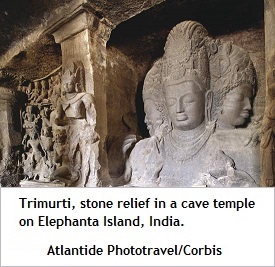 |
Anu (Akkadian), Sumerian: An (Anu refers to a) Mesopotamian sky god and a member of the triad of deities completed by Enlil and Ea (Enki). Like most sky gods, Anu, although theoretically the highest god, played only a small role in the mythology, hymns, and cults of Mesopotamia. He was the father not only of all the gods but also of evil spirits and demons, most prominently the demoness Lamashtu, who preyed on infants. Anu was also the god of kings and of the yearly calendar. He was typically depicted in a headdress with horns, a sign of strength. His Sumerian counterpart, An, dates from the oldest Sumerian period, at least 3000 BC. Originally he seems to have been envisaged as a great bull, a form later disassociated from the god as a separate mythological entity, the Bull of Heaven, which was owned by An. His holy city was Uruk (Erech), in the southern herding region, and the bovine imagery suggests that he belonged originally to the herders' pantheon. In Akkadian myth Anu was assigned a consort, Antum (Antu), but she seems often to have been confused with Ishtar (Inanna), the celebrated goddess of love. Source: "Anu." Encyclopædia Britannica. |
Memory Physiological aspects of long-term memory Investigators concerned with the physiological bases of memory seek a kind of neuro-chemical code with enough physical stability to produce a structural change or memory trace (engram) in the nervous system; mechanisms for decoding and retrieval also are sought. Efforts at the strict behavioral level similarly are directed toward describing encoding, decoding, and retrieval mechanisms as well as the content of the stored information. One way to characterize a memory (or memory trace) is to identify the information it encodes. A learner may encode far more information than is apparent in the task as presented. For example, if a subject is shown three words for a few seconds and, after 30 seconds of diversion or distraction, is asked to repeat the process of learning-delay-recall with three new word groups, poorer and poorer recall will be observed on successive trials in cases where all of the word groups share some common element (e.g., all are animal names). Such findings may be explained by assuming that the learner encodes this animal category as part of his memory for each word. Initially, the common category might be expected to aid recall by sharply delimiting the number of probable words. Successive triads, however, tend to be encoded in increasingly similar ways, blurring their unique characteristics for the subject. An additional step provides critical supporting evidence for such an interpretation. If a final triad of vegetable names is unexpectedly presented, recall recovers dramatically. The person being tested will tend to reproduce the vegetable names much better than he does those of the last animal triad, and recall will be roughly as efficient as it was for the first three animal names. This shift in word category seems to provide escape from earlier confusion or blurring, and it may be inferred that a common conceptual characteristic was encoded for each animal name. Any characteristic or attribute of a word may be investigated in this way to determine whether it is incorporated in memory. When recall does not recover, it may be inferred that the manipulated characteristic has little or no representation in memory. For example, grammatical class typically does not appear to be encoded; decrement in recall produced after a series of triads consisting of verbs tends to continue when a shift is made to adjectives. Such an experiment does not indicate what common encoding characteristic might be responsible for the decrement, suggesting only that it is not grammatical class. Encoding mechanisms also may be inferred from tests of recognition. In one kind of experiment, for example, subjects study a long list of words, being informed of a multiple-choice memory test to follow. Each word is made part of a test question that includes other carefully chosen new words, or "distractors." Distractors are selected to represent the different types of encoding the investigator suspects may have occurred in learning. If the word selected for study is chosen by the subject, little can be inferred about the nature of the encoding. Any errors, however, can be most suggestive. Thus, if the word to be studied was TABLE, the multiple-choice list of words might be TABLE, CHAIR, ABLE, FURNITURE, PENCIL, with TABLE being the only correct answer. If CHAIR is incorrectly selected, it may be suspected that this associatively related word occurred to the subject implicitly during learning and became so well encoded that the subject later could not determine whether it or TABLE had been presented for memorization. If the wrong choice is ABLE, acoustical resemblance to TABLE may have contributed to the confusion. If FURNITURE is erroneously chosen, it is likely that the conceptual category was prominent in the encoding. Finally, because it is not related in any obvious way to TABLE, the word PENCIL may be intended as a control, unlikely to be a part of the memory for TABLE. If this is the case, subjects will be more likely to select distractor words such as PENCIL (or any others that have been encoded along with TABLE). It is important to note the limitations on what may be inferred from experiments of this kind. Although a subject may have encoded in ways suggested by particular distractors, he still may be able to choose the correct word. Or, even if he chooses one of the distractor words, he still may have encoded in ways not represented by that word. Source: "Memory." Encyclopædia Britannica Ultimate Reference Suite, 2013. |
It is of interest to point out that what we of today may describe as a trio or duo of gods/goddesses, may not necessarily have been what was viewed by those who acknowledged such entities... despite the images which have been found as artefacts that describe such associations. In other words, while we of today may claim a particular assembly of gods or goddesses can be viewed as a duo or trio, those in the past may not have consciously held this perspective.
Note: the reference to the "three" organization in both the Egyptian and Greco-Roman accounts is appealing to those who have an interest in the "threes" phenomena related to human cognition. For example, was the usage of patterns-of-three an independently arrived at conceptual usage or due to cultural borrowing? Why is peace associated with a triad augmentation when other gods and goddesses are not? Are Peace, Justice, and Good Order (harmony?, balance?, cyclicity?) individual attributes of a singular personality that did not emerge because the ancient cultures did not persist long enough... as a precursor for such a presumed evolution in (fused) thinking to take place?
While Jesus has sometimes been referred to as the "Prince of Peace", (he supposedly in his own words...) actually disputes this phrase and praise by stating in Matt 10:34 that he did not come to bring peace, but division. Thus, it is rather hypocritical for anyone who wants to assert a position of peace to use him as the poster child. The warring Mohammed of the ancient Middle East is another anti-peace character, as have been so many adherents of one another religious or philosophical doctrine. Jesus' oppositional annunciation against those claiming he came to bring peace, represents a typical argumentative pose used by many a philosopher and scholar who take an opposite view of a situation— in an attempt to present themselves with alternative considerations wrought by introducing a contrary or oppositional perspective that may cause one or more others to pose a question that they themselves have not considered, but an exploration thereof may lead to a fruitful insight. In other words, like many an education instructor who deliberately invites argumentative situations in order to be presented with the possibility of an alternative perspective from those who view the instructor as the king of a hill they want to knock off of, or as a gunslinger who is shot down and thus makes their opponent instantly famous... but also a target themselves... from those whose own reputations were built up by being a follower of the person being attacked.
As part of the Western traditions of mythology, peace was not a large enough of a consideration to merit a god-like status. Perhaps Western history should fall by the wayside in order to make room for a new and better civilization. Likewise, so should all present day histories of all nations. Yet, this might well require that there be a change in the human birthing process in order to get rid of the "birth trauma" of every single person being born. When all of us share in the same form of trauma, that which follows may be little more than a vast array of attempts of trying to return to the womb... which was not a sanctuary of peace due to stability, but an environment of change.
On page 62 in this series there was made mention of the absence of a specific god noted as the entity representing peace in and of itself. Though the idea of peace might have been implied as an attribute associated as a quality of a god noted for some specificity, the idea of peace... perhaps as an emotional state, was not a preoccupation as was war or love... because these are seen as "powerful" emotions. The idea of Peace is not customarily linked with some emotion, though some emotion (such as joy), may use the word peace in describing a peaceful situation. Sustained peace may be an impossibility because it is not the label preeminently used to describe one or more strong emotions assigned to a given set of behaviors as we do love, war, sorrow, pain, or discovery. Indeed, even today we do not find the word "God" associated with a dominant qualitative characteristic labeled "peace". Quite often, the word "peace", much less the idea of peace, does not come to mind when the word "God" is spoken, written, or thought of. There is no automatic mental or emotional referencing which may take place. However, one should not necessarily be inclined to align the words "peace" and "god" as if they are synonymous. In fact, a "god" need not be a religious figure, despite the adoption of the word "god" as if it is a property right of religions... just as religions self-proclaim a proprietary right to the word "morality", when neither the words "god" nor "morality" belong to the word religion. Religions have merely adopted them and persuaded lots of people to believe they belong to religion because they represent power.
The word "religion" does not mean "peace". From the wordweb dictionary we find religion defined as:
- A strong belief in a supernatural power or powers that control human destiny.
- An institution to express belief in a divine power.
The reason for using this definition is to portray a characteristic meaning that one or another reader may not have used, since the present day sense of what is meant as "religion" may well be tied to a philosophy of personal behavior that is adopted. In other words, it is not merely a description about feelings or considerations which may have been evoked by a perception that presents oneself with a circumstance or condition that is untypical or for which there is no standardized interpretation for shared or similarly perceived experiences. Whereas the dichotomy of good and bad may have been presented to describe an event, the word peace was not, and is not generated in the collective mind of humanity as a shared model of representation. The desire to sustain peace above all else is not a central interest... even amongst theologians... because all of us define peace in accord with unrealistic expectations that can not be achieved and sustained in a deteriorating galactic and planetary environment. Both war and peace are variable swings on a pendulum aligned to the incremental deteriorations of the planet... and leaving the planet will force humanity to change the type of species it is in order to accommodate the requirements for long term habitation off the planet of its birth. The word peace may well be an alternative word describing the finite state of the human species.
We have no mythology accounting for the origin of Peace. Whereas we have mythology describing the origins of light, darkness, void, humans, animals, etc., why does peace suffer such an absence? Whereas other attributes of human behavior are projected into the character of a god, not so is the characteristic we of today might label as peace. While we note the presence of a war god like Mars, why is there no counter-part peace god in order to maintain a balance in nature... particularly amongst those ideologies which speak of harmony, balance and the presence of named balancing acts both in and outside human behavior? Why is the topic of peace relegated to the position of being a collaborative attribute and not a singular unifying force, process or role in and of itself? Is this because of a deficiency in the human brain that, once articulated as it is being done here, will result in someone responding with an answer that amounts to an excuse... and a failure in their embrace philosophy which they esteem with a life-serving embrace and recital to others?
Do humans deliberately make peace so illusive in order to provide themselves with an excuse to celebrate and reward themselves with efforts that are intentionally meant not to be sustained as if all generations are theatrical participants executing one role or another in an extended play with many acts containing a similar script rewritten according to custom, language and any ulterior motive... so long as the cycle is perpetuated; because of an unrecognized brain functionality caused by a disease which keeps the mental processes from evolving beyond a set rate in a set direction defined as a singularity, dichotomy or trichotomy? For example, the singularity might be referred to as a single god or universe associated with nature. The dichotomy may be referred to as a balance in nature. And the trichotomy may on some occasions refer to the "nature" of heaven-earth-underworld... with the "underworld" as that which exists after the Sun goes down.
Curiously, in making a comparison to the presence of numerous religions in the distant past that have all largely been transmutated into some representative Islamic, Judaic or Christian perspective (out of many three come to dominate); let us make note of the comings and goings of multiple ideas (organizations/movements) involving the idea of peace... yet no singular (or tripartite) rationality has yet been developed. In other words, there has been multiple ideas about peace having come into existence, but none have flourished into a dominant theme. The efforts of the Nobel Peace Committee and the United Nations have not resulted in any definitive ideological supremacy.
Date of Origination: Friday, 27-April-2017... 06:29 AM
Date of initial posting: Sunday, 11-June-2017... 9:27 AM
Updated posting: Saturday, 31-March-2018... 1:10 PM